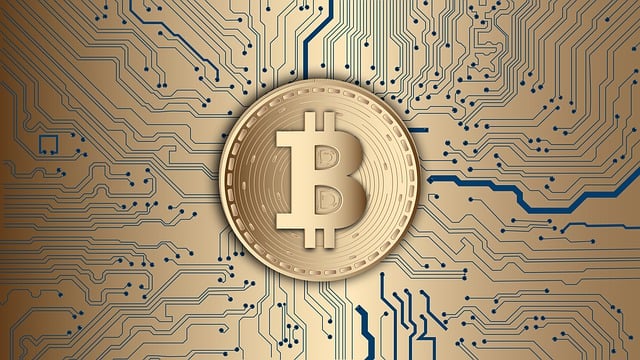DeFi lending protocols, such as Aave and Compound, have transformed ICO fundraising by enabling peer-to-peer borrowing and lending without traditional intermediaries. While these protocols offer attractive returns for lenders and lower costs for borrowers, they also carry significant risks, including smart contract vulnerabilities, market volatility, and borrower default. Understanding the mechanics of DeFi lending is crucial for both ICO projects seeking capital and investors navigating this vulnerable ecosystem. To mitigate risks, developers and investors should scrutinize protocol creditworthiness, implement security measures, and diversify funding sources.
In the dynamic landscape of blockchain, Initial Coin Offerings (ICOs) have evolved beyond traditional methods. Integrating decentralized finance (DeFi) lending protocols offers a revolutionary approach to fundraising, unlocking unprecedented opportunities for project developers. However, navigating DeFi’s complexities involves understanding its underlying mechanisms and assessing associated risks. This article delves into DeFi lending protocols, explores their unique advantages in ICOs, and provides strategies to mitigate risks, ensuring secure fundraising within this innovative ecosystem.
- Understanding DeFi Lending Protocols: The Basics and Mechanisms
- ICO Fundraising Through DeFi: Opportunities and Unique Advantages
- Assessing Risks Associated with DeFi Lending in ICOs
- Mitigating Risks: Strategies for Secure DeFi ICO Fundraising
Understanding DeFi Lending Protocols: The Basics and Mechanisms

Decentralized finance (DeFi) lending protocols have emerged as a key component in the ICO fundraising landscape, offering a new way for projects to access capital and for investors to participate in the blockchain economy. These protocols operate on smart contracts, enabling direct peer-to-peer borrowing and lending without intermediaries like traditional banks. The basics involve users depositing cryptocurrencies into a pool, which is then used to lend funds to borrowers who pay interest in return. This creates a win-win situation: lenders earn returns, while borrowers gain access to liquidity without incurring the costs of traditional finance.
However, DeFi lending protocols and their risks should not be overlooked. The decentralized nature means that there’s no central authority to oversee or insure these transactions, making them susceptible to smart contract bugs, hacks, and market volatility. Additionally, borrowers may default on loans, leading to losses for lenders. Understanding the underlying mechanics of these protocols is crucial for both ICO projects seeking fundraising and investors looking to participate securely in this evolving DeFi ecosystem.
ICO Fundraising Through DeFi: Opportunities and Unique Advantages

The world of Initial Coin Offerings (ICOs) has evolved significantly with the advent of Decentralized Finance (DeFi). DeFi lending protocols offer a novel approach to ICO fundraising, providing both opportunities and unique advantages. These protocols, like Aave or Compound, facilitate token sales by allowing investors to borrow crypto assets using their existing holdings as collateral. This opens up avenues for startups and projects that might have faced challenges in traditional funding methods due to high costs or stringent requirements.
However, it’s crucial to acknowledge the risks associated with DeFi lending protocols. Volatility and smart contract vulnerabilities pose significant threats. Investors need to conduct thorough research and understand the underlying technology before participating. The decentralized nature of DeFi also means that there’s often limited recourse for dispute resolution, unlike traditional financial systems. Yet, despite these risks, DeFi-based ICO fundraising continues to attract attention due to its potential for higher returns and increased accessibility for both investors and startups.
Assessing Risks Associated with DeFi Lending in ICOs

In the realm of Initial Coin Offerings (ICOs), DeFi lending protocols have emerged as a popular funding mechanism, offering both opportunities and challenges. While these decentralized finance (DeFi) platforms aim to revolutionize fundraising by providing access to global investors, they also come with inherent risks that need careful consideration. Assessing these risks is crucial for project developers and potential investors alike to ensure the success and sustainability of ICOs.
DeFi lending protocols introduce unique complexities compared to traditional financing methods. The decentralized nature, lack of intermediaries, and smart contract-based execution provide advantages like transparency and lower costs. However, they also present vulnerabilities such as smart contract bugs, security breaches, market volatility, and regulatory uncertainties. Investors must evaluate the creditworthiness of lending platforms, understand the collateralization mechanisms, and assess the potential impact of liquidity issues or sudden protocol failures on their investments. By meticulously examining these risks, ICO participants can make informed decisions, mitigate potential losses, and contribute to the development of a more robust DeFi ecosystem.
Mitigating Risks: Strategies for Secure DeFi ICO Fundraising

In the world of decentralized finance (DeFi), ICO fundraising has evolved into a complex landscape, demanding strategic approaches to mitigate inherent risks. DeFi lending protocols, while offering unprecedented financial opportunities, come with their own set of challenges. These include smart contract vulnerabilities, market volatility, and regulatory uncertainties. To navigate these waters successfully, projects must adopt robust security measures. One strategy involves engaging experienced audit firms to scrutinize smart contracts, identifying potential loopholes before the ICO begins. Regular security updates and patches are crucial to address emerging threats.
Additionally, diversifying funding sources can enhance security. By leveraging multiple DeFi platforms and investment groups, the risk of a single point failure is reduced. Transparent communication about risks and rewards is essential for building investor trust. Clear disclosures about potential losses and regulatory changes can help manage expectations. Moreover, implementing secure fundraising mechanisms, such as vesting schedules and lockups, ensures that funds are not immediately accessible to developers, reducing the impact of any potential security breaches.
In conclusion, integrating DeFi lending protocols into ICO fundraising strategies presents a unique opportunity to tap into decentralized finance’s advantages. However, as with any innovative approach, understanding the mechanics and assessing associated risks is paramount. By grasping the intricacies of DeFi lending and implementing robust risk mitigation strategies, projects can navigate this new landscape securely, ensuring successful fundraising and fostering the growth of the DeFi ecosystem.
